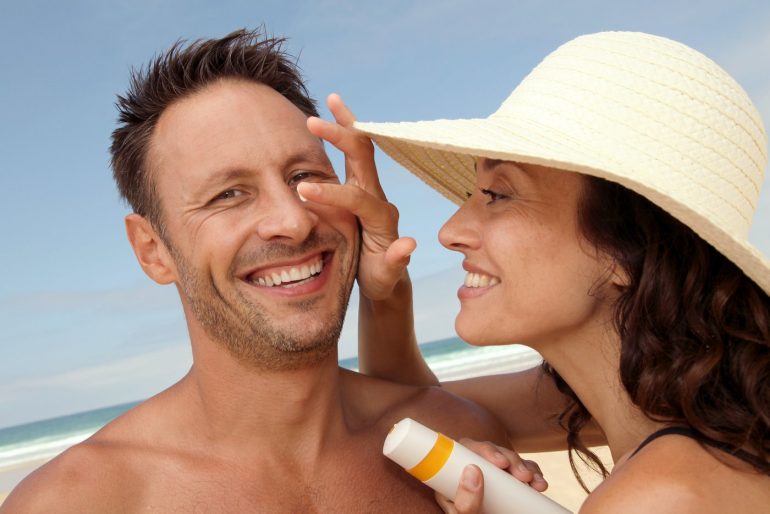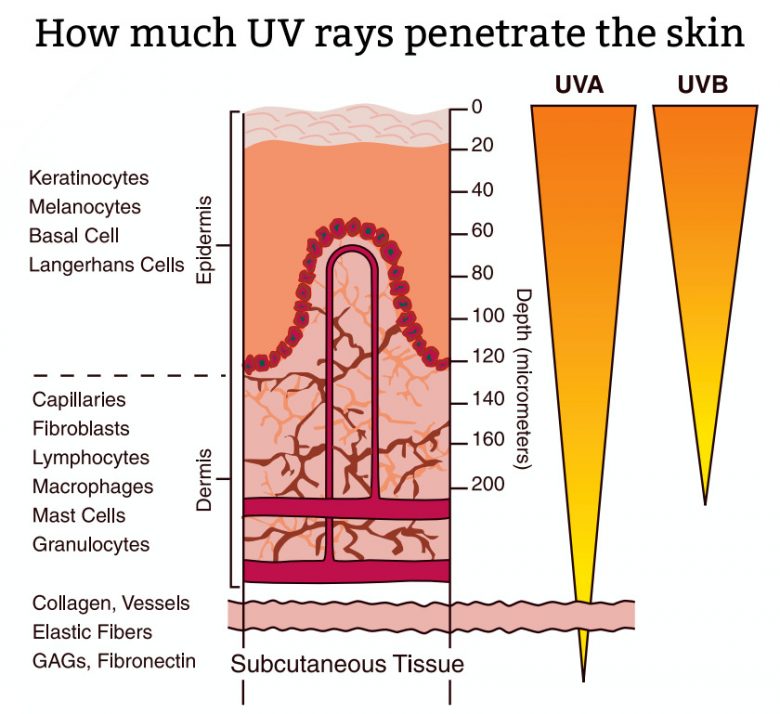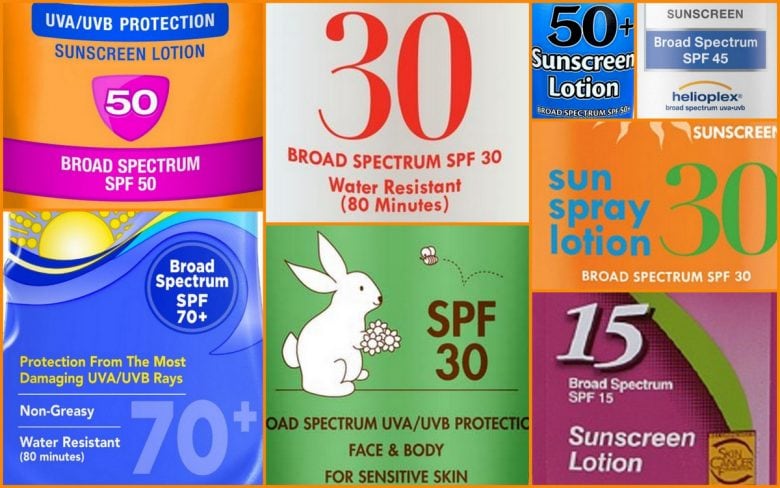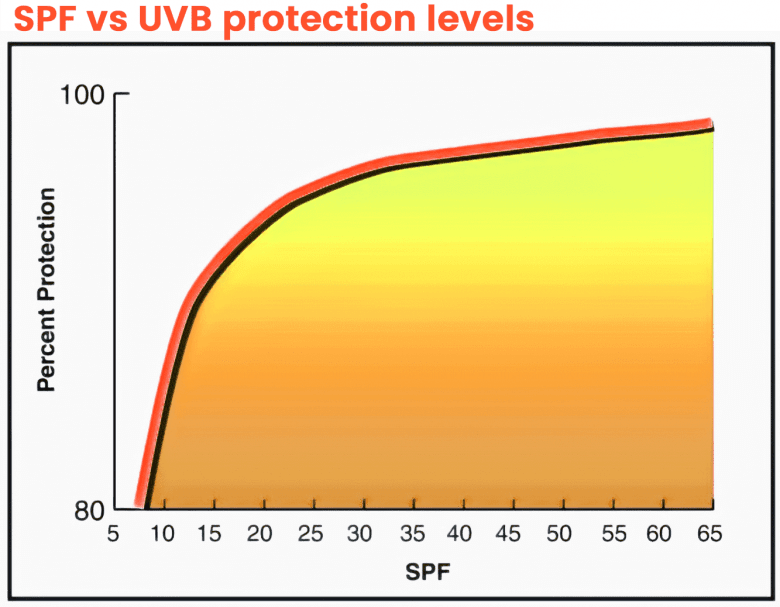For most people, it’s good enough to know that sunscreen works by squeezing it out of the bottle and rubbing it onto our skin.
But what is in the stuff that keeps us from getting the kind of nasty sunburn that can lead to even worse things — like skin cancer? Here’s a look inside the bottle.
In the summer, when the sun is at its peak and it’s hard to escape its rays, most people look for a quick fix to protect their skin from harmful ultraviolet (UV) radiation.
Sunscreen products work by using a few different tricks to keep sunlight from interacting with your skin.
Active physical ingredients in sunscreen
The physical compounds in sunscreen work to reflect, scatter, and absorb both UVA and UVB rays — keeping your skin protected.
Broad-spectrum active ingredients like titanium dioxide and zinc oxide leave a white residue on the skin following application when used in a larger particle form.
However, when these active ingredients are converted into nanoparticles (smaller, lighter molecules) they are transparent — appearing to vanish on the skin — and do not leave a visible residue, according to Daniel M Siegel, MD, FAAD, president of the American Academy of Dermatology.
Not only are they less obtrusive, but the fact that the pieces of titanium dioxide and zinc oxide are so tiny actually gives the sunscreen enhanced ability.

“One of the main benefits of nanoparticles in sunscreens is that the small molecules can provide more protection and more even coverage on the skin’s surface than larger particles,” says Dr Siegel.
“Considerable research on the use of nanoparticles on healthy, undamaged skin has shown that the stratum corneum — the outermost layer of the skin — is an effective barrier to preventing the entry of nanoparticles into the deeper layers of the skin.”
The AAD adds that titanium dioxide and zinc oxide have a long history of safe use in sunscreens, and offer good options for broad-spectrum UV protection.
Active chemical ingredients in sunscreen
Broad-spectrum sunscreens often contain a number of chemical ingredients that absorb UVA and UVB radiation. Many sunscreens contain UVA-absorbing avobenzone or a benzophenone (such as dioxybenzone, oxybenzone or sulisobenzone), in addition to UVB-absorbing chemical ingredients (some of which also contribute to UVA protection).
Oxybenzone is one of the few FDA-approved ingredients that provides effective broad-spectrum protection from UV radiation, and has been approved for use since 1978.
“Available peer-reviewed scientific literature and regulatory assessments from national and international bodies do not support a link between oxybenzone in sunscreen and hormonal alterations, or other significant health issues in humans,” says Dr Siegel.
“The FDA has approved oxybenzone in sunscreen for use on children older than six months, and dermatologists continue to encourage protecting children by playing in the shade, wearing protective clothing and applying broad-spectrum sunscreen.”
Combined for greater sun protection
Organic sunscreens — not organic in the no pesticides/free-range sense, but meaning a compound with a carbon base — actually absorb the UV rays, according to research published in The Lancet, and consist of a range of complex organic molecules which blend together to give photoprotective qualities.
As explained in a 2013 medical journal article, “Chemical sunscreens absorb high-energy UV rays, and physical blockers reflect or scatter light. Multiple organic compounds are usually incorporated into chemical sunscreening agents to achieve protection against a range of the UV spectrum.
“Inorganic particulates may scatter the microparticles in the upper layers of skin, thereby increasing the optical pathway of photons, leading to absorption of more photons and enhancing the sun protection factor (SPF), resulting in high efficiency of the compound.”
Some downsides to the chemicals
According to The Skin Cancer Foundation, the UVB absorber PABA (para-aminobenzoic acid) was patented back in 1943. For years, it was a very common ingredient in sunscreens — until it was found to cause allergies in some users, and raised fears of a link to cancer development.
Those concerns, plus that PABA could cause yellow stains on clothes, has caused many brands to replace that ingredient in their products. While PABA is still FDA-approved for use in sunscreen, starting in the mid-1980s, its popularity has declined sharply.
In rare cases, chemical ingredients cause skin reactions, including acne, burning, blisters, dryness, itching, rash, redness, stinging, swelling, and tightening of the skin. Such reactions are most commonly associated with PABA-based sunscreens and those containing benzophenones.
Some sunscreens also contain alcohol, fragrances, or preservatives, so avoid those if you have skin allergies.
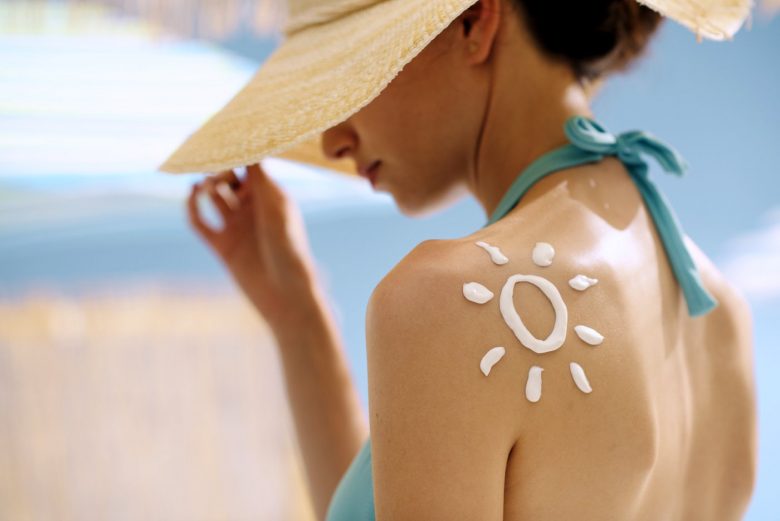
Don’t overdo
While many studies have shown that sunscreen protects against acute UV skin damage and non-melanoma skin cancer, whether or not sunscreen will stop the development of melanoma — the most serious type of skin cancer — has not yet been conclusively proven.
In a published work from 2007, Dr Stephan Lautenschlager, Outpatient Clinic of Dermatology at the Triemli Hospital in Zurich makes one final point: “Sunscreens should not be abused in an attempt to increase time in the sun to a maximum.”
When choosing sunscreen, what is the best SPF?
We know that sunscreens with varying SPFs numbers are available everywhere — but what does “SPF”actually mean?
Here’s a look at the science that goes into determining a sunscreen’s skin protection factor, and how to choose the best one for your needs.
How much protection are you getting?
Sunscreens protect your skin by absorbing and/or reflecting UVA and UVB rays. The FDA requires that all sunscreens contain a Sun Protection Factor (SPF) label. The SPF reveals the relative amount of sunburn protection that a sunscreen can provide an average user when correctly used.
SPF is defined as the minimum sun radiation dose (mainly UVB) required to produce sunburn after application of 2mg per square centimeter, divided by the dose of sunlight to produce the same effect on unprotected skin, according to research published in The Lancet by Dr Stephan Lautenschlager, Outpatient Clinic of Dermatology at the Triemli Hospital in Zurich, Switzerland, and colleagues.
This translates to a protection factor of 50% for SPF2, 87.5% for SPF8, 93.6% for SPF16, and 96.9% for SPF32.
Sunscreens with an SPF of at least 15 are recommended, and higher SPF values (up to 50) provide greater sunburn protection. So what about tubes and bottles marked SPF 70 or 100?
In June 2011, the FDA proposed a regulation that would require sunscreen products that have SPF values higher than 50 to be labeled as simply “SPF 50+.” That’s because the FDA “does not have adequate data demonstrating that products with SPF values higher than 50 provide additional protection compared to products with SPF values of 50.”
You should be aware that an SPF of 30 is not twice as protective as an SPF of 15; rather, when properly used, an SPF of 15 protects the skin from 93 percent of UVB radiation, and an SPF 30 sunscreen provides 97 percent protection (see chart SPF vs. UVB protection to the right).
Furthermore, as manufacturer Banana Boat points out, “SPF numbers don’t add up the way you might think. Using an SPF 8 and SPF 15 together won’t allow you to remain in the sun 23 times longer than without protection.”
“Wearing a higher sunscreen SPF does NOT mean you do not need to reapply,” add the folks at Coppertone. “You should reapply sunscreen at least every two hours, regardless of the SPF.”
SPF testing
All sunscreens must be tested according to an SPF test procedure. The test measures the amount of ultraviolet (UV) radiation exposure it takes to cause sunburn when a person is using a sunscreen in comparison to how much UV exposure it takes to cause a sunburn when they do not use sunscreen.
Because SPF values are determined from a test that measures protection against sunburn caused by ultraviolet B (UVB) radiation, SPF values only indicate a sunscreen’s UVB protection.
However, sunscreens that pass the broad spectrum test will have demonstrated that they also provide ultraviolet A (UVA) protection that is proportional to their UVB protection. Therefore, a higher SPF value for sunscreens labeled “Broad Spectrum SPF [number]” will indicate a higher level of protection from both UVA and UVB radiation.
Although the SPF ratings found on sunscreen packages apply mainly to UVB rays, many sunscreen manufacturers include ingredients that protect the skin from some UVA rays as well. These “broad-spectrum” sunscreens are highly recommended.
Only broad-spectrum sunscreens with an SPF value of 15 or higher can claim to reduce the risk of skin cancer and early skin aging if used as directed with other sun protection measures. Non-broad spectrum sunscreens and broad-spectrum sunscreens with an SPF value between 2 and 14 can only claim to help prevent sunburn.
That said, all products do not have the same ingredients; if your skin reacts badly to one product, try another one or call a doctor.
Sunscreen not always the answer
Unfortunately, using sunscreen does not mean it is safe to spend extra time in the sun, especially when the UV Index is high. (Check here to see the current UV index numbers from the NOAA/National Weather Service.)
Although a sunscreen with an SPF of 15 or higher offers protection from sunburn, it does not block all of the sun’s damaging rays.
In fact, there is no evidence that sunscreens protect you from malignant melanoma, the deadliest form of skin cancer, even though sunburns have been linked with the development of melanoma. There is only limited evidence that sunscreens protect you from several other types of skin cancer.
To reduce your risk, regularly use sun protection measures including:
1. Limit your time in the sun, especially between the hours of 10am and 2pm, when the sun’s rays are most intense.
2. Use extra caution near water, snow and sand — all reflective surfaces that can increase your sun exposure.
3. Wear clothing to cover skin exposed to the sun — for example, long-sleeved shirts, pants, sunglasses, and broad-brimmed hats.
4. Use sunscreens with broad-spectrum SPF values of 15 or higher regularly and as directed.
5. Reapply sunscreen at least every 2 hours, more often if you’re sweating or jumping in and out of the water.
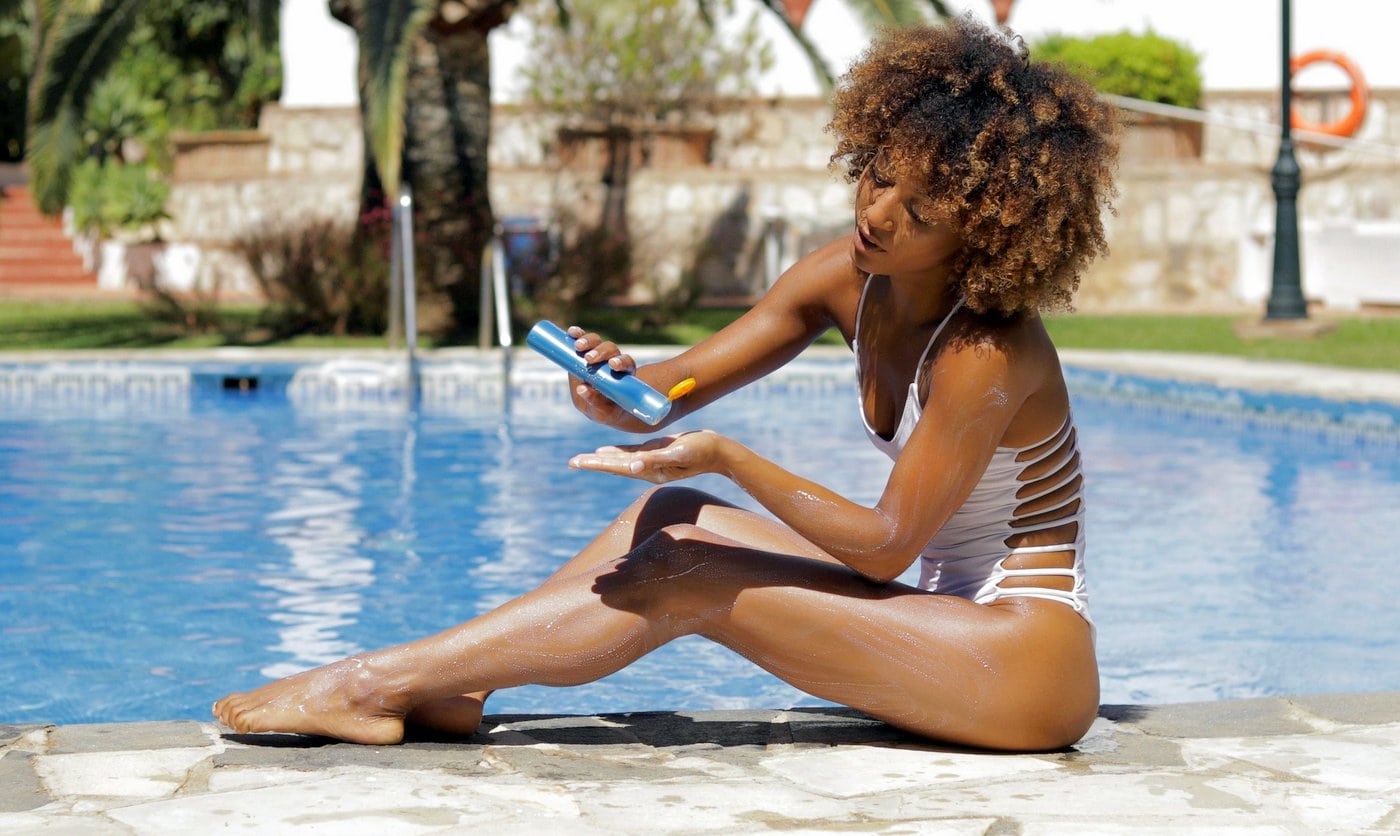
14 tips to avoid sunburn
Unfortunately, you can’t just slap on a little sunscreen and expect to be safe from sunburn.
Here’s what you need to know about using sunscreen, and other ways to protect yourself from the sun’s harmful rays.
Sunscreen and sun protection tips
1. Plan ahead: Apply sunscreen 20 minutes before going out into the sun (or as directed by the manufacturer) to give it time to absorb into your skin.
2. Use enough: Slather sunscreen on generously and regularly — about 1 ounce every 2 hours — and more often if you are swimming or perspiring. A small tube containing between 3 and 5 ounces of sunscreen might only be enough for one person during a day at the beach.
3. Don’t miss spots: Don’t forget about lips, ears, feet, hands, bald spots and the back of the neck. In addition, apply sunscreen to areas under bathing suit straps, necklaces, bracelets and sunglasses.
4. Check the sunscreen’s expiration date. Sunscreen without an expiration date has a shelf life of no more than three years, but its shelf life will be shorter if it’s been exposed to high temperatures.
5. “Water resistant” sunscreens must maintain their SPF after 40 minutes of water immersion, while “very water resistant” sunscreens must maintain their SPF after 80 minutes of water immersion. They must be reapplied regularly, as heavy perspiration, water, and towel drying remove the sunscreen’s protective layer.
6. Sunglasses: Sunglasses that block both UVA and UVB rays offer the best protection, and also shield the tender skin around your eyes from sun exposure. The majority of sunglasses sold in the United States meet this standard, says the CDC. Wrap-around sunglasses work best because they block UV rays from sneaking in from the side.
7. Face and lips: Sunscreen is now commonly found in moisturizers, makeup and other cosmetics. Check the packaging for an SPF to be sure, and wear lip balm or lipstick containing SPF 15 or more.
8. UV rays aren’t just from above: Use extra caution near water, snow and sand — all reflective surfaces that can increase your sun exposure. Even on a cloudy day, skin is still exposed to 80 percent of the sun’s rays.
9. Hats can help shield your skin from the sun’s UV rays, notes the CDC. Choose a hat that provides shade for all of your head and neck. For the most protection, wear a hat with a brim all the way around that shades your face, ears, and the back of your neck.
10. Good clothes to wear: Tightly-woven, thick garments made of denim, wool or polyester offer the best protection from the sun. Loose, dry fabrics, and clothes that have shrunk after washing — which makes them denser — are better at stopping harmful UV rays reaching the skin. There are many kinds of sun protection clothing available, too.
11. Fabrics may allow ultraviolet rays to reach your skin: Cotton, linen and acetate fabrics are much less effective at sun protection, according to research published in medical journal The Lancet. In addition, wet or stretched materials (such as swimsuits), and those that have been bleached are not as helpful, either.
12. Minimize it: To fully protect yourself, remember to seek shade, try not to be outside during peak hours (especially between the hours of 10am and 2pm, when the sun’s rays are most intense), and wear protective clothing in addition to applying sunscreen.
13. Health conditions and medications: Certain diseases, such as lupus, can also make a person more sensitive to sunburn. Some medications, such as antibiotics and antihistamines — and even certain herbal remedies — can cause extra sensitivity to the sun’s rays. Discuss these issues with your healthcare provider.
14. Bug and sun: Apply insect repellent 15 minutes after sunscreen, notes the University of Wisconsin, otherwise the chemicals in sunscreen may increase the absorption of DEET, the active ingredient in most bug sprays.

